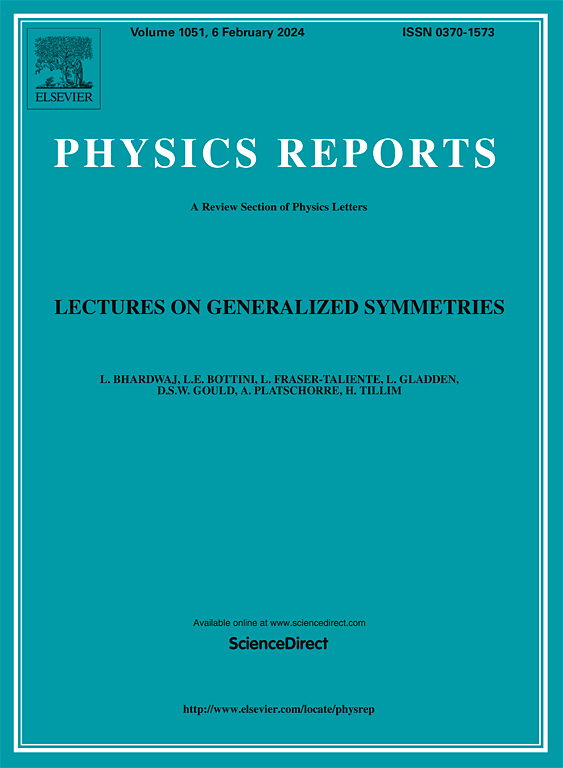Review of top quark mass measurements in CMS
IF 29.5
1区 物理与天体物理
Q1 PHYSICS, MULTIDISCIPLINARY
引用次数: 0
Abstract
The top quark mass is one of the most intriguing parameters of the standard model (SM). Its value indicates a Yukawa coupling close to unity, and the resulting strong ties to Higgs physics make the top quark mass a crucial ingredient for understanding essential aspects of the electroweak sector of the SM. This review offers the first comprehensive overview of the top quark mass measurements performed by the CMS Collaboration using the data collected at centre-of-mass energies of 7, 8, and 13 TeV. Moreover, a detailed description of the top quark event reconstruction is provided and dedicated studies of the dominant uncertainties in the modelling of the signal processes are discussed. The interpretation of the experimental results on the top quark mass in terms of the SM Lagrangian parameter is challenging and is a focus of an ongoing discussion in the theory community. The CMS Collaboration has performed two main types of top quark mass measurements, addressing this challenge from different perspectives: highly precise ‘direct’ measurements, based on reconstructed top quark decay products and relying exclusively on Monte-Carlo simulations, as well as ‘indirect’ measurements, where the simulations are employed to determine parton-level cross sections that are compared to fixed-order perturbative calculations. Recent mass extractions using Lorentz-boosted top quarks open a new avenue of measurements based on top quark decay products contained in a single particle jet, with promising prospects for accurate theoretical interpretations.
CMS中顶夸克质量测量综述
顶夸克质量是标准模型(SM)中最有趣的参数之一。它的值表明汤川耦合接近统一,并且由此产生的与希格斯物理的强联系使顶夸克质量成为理解SM电弱部分基本方面的关键因素。这篇综述首次全面概述了CMS合作使用质心能量为7、8和13 TeV的数据进行的顶夸克质量测量。此外,还详细描述了顶夸克事件重建,并讨论了信号过程建模中主要不确定性的专门研究。用SM拉格朗日参数解释顶夸克质量的实验结果是具有挑战性的,也是理论界持续讨论的焦点。CMS合作进行了两种主要类型的顶夸克质量测量,从不同的角度解决了这一挑战:高度精确的“直接”测量,基于重建的顶夸克衰变产物,完全依赖于蒙特卡罗模拟,以及“间接”测量,其中模拟用于确定与固定阶微扰计算相比的部分能级横截面。最近使用洛伦兹推进顶夸克的质量提取开辟了一条基于单粒子射流中包含的顶夸克衰变产物的测量新途径,具有准确理论解释的良好前景。
本文章由计算机程序翻译,如有差异,请以英文原文为准。
求助全文
约1分钟内获得全文
求助全文
来源期刊

Physics Reports
物理-物理:综合
CiteScore
56.10
自引率
0.70%
发文量
102
审稿时长
9.1 weeks
期刊介绍:
Physics Reports keeps the active physicist up-to-date on developments in a wide range of topics by publishing timely reviews which are more extensive than just literature surveys but normally less than a full monograph. Each report deals with one specific subject and is generally published in a separate volume. These reviews are specialist in nature but contain enough introductory material to make the main points intelligible to a non-specialist. The reader will not only be able to distinguish important developments and trends in physics but will also find a sufficient number of references to the original literature.
 求助内容:
求助内容: 应助结果提醒方式:
应助结果提醒方式:


